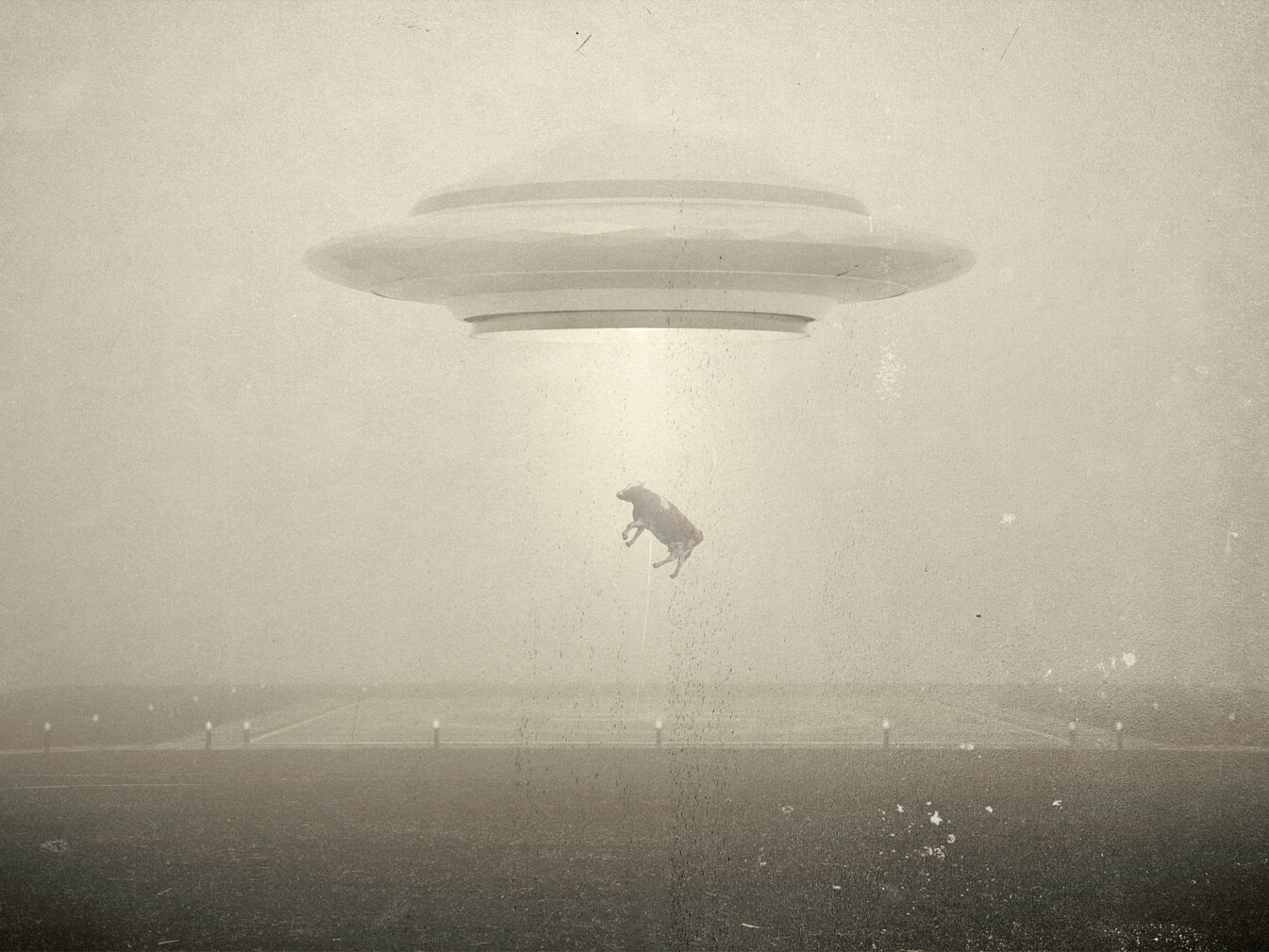Evolution is a story of incremental and gradual change. It is both spontaneous and unavoidable. In considering the evolution of ideas, we look at how the knowledge and beliefs people hold change over time. By evolution, I do not mean Darwin’s biological theory of evolution even though the natural selection principle of ‘survival for the best-adapted applies to both.
To Be a Genius
The scientific pioneers of the middle ages were more frequently accused of owing their ‘supernatural’ knowledge and skill to the devil than they were to God. It wasn’t until late in the 19th century when scientists discovered that to be a genius is to owe your outstanding achievements to the fortunate concurrence of a variety of factors, part innate and part environmental, all quite ordinary in themselves, developed to an extraordinary degree.
Genius shouldn’t be thought of as simply having a high IQ. It’s more in the use of intellectual capacities to think of beneficial unthought thoughts that increase the combined wisdom of humanity. But even with all the skills, without an enabling environment and appropriate training, genius rarely materializes. Individual skills such as the ability to generate new ideas spontaneously, receptivity, insight, and zeal -that enthusiasm that keeps a person working late into the night long after everyone, including the cleaning personnel, has gone home to relax – are crucial. But they’re one part of the whole. The skills are the seeds. The environment which we are exposed to forms the cultivated and watered soil in which the seeds of genius must be planted before they can mature and blossom.

Today, we can spend our time answering salient questions like how best to discover individuals endowed with creative abilities of various kinds and how to train and educate them. We understand the importance of these skills, and more importantly, we understand the idea behind the value of increasing investment in improving outcomes.
Dream, Oh Dreamer
Towards the end of The Wizard of Oz, Glinda the good witch reveals that Dorothy always had the power to get home, but that she wouldn’t have believed it if she’d been told at the beginning; she had to discover it for herself. When asked what she’s learned, Dorothy says “If I ever go looking for my heart’s desire again, I won’t look any further than my own backyard. Because if it isn’t there, I never really lost it, to begin with!”
You see, Dorothy gets caught in a tornado, and wakes up in the strange land of Oz. She’s desperate to find her way back home to Kansas. Dorothy goes on a quest to meet a wizard who supposedly holds the key to her return home.
At the end of the story, Dorothy discovers that she only needed to tap her ruby slippers together and repeat the phrase “There’s no place like home” to wake up in her bed, surrounded by her family.
When her family first tells her that the adventure in Oz was just a nightmare, Dorothy doesn’t believe them. She is convinced that Oz was a real place. Her family reassures her that she never left home; that it was just a dream…”
When you’re in a dream, you don’t know you’re dreaming until you wake up. When you wake up, you realize that all along you were the dreamer; not the dream.
The World is Made of Thought
Everything we know exists as an idea. Culture. History. Economic conditions. Religion. Music. Poetry. Dance. Websites. Cats. Rain. Fear. Joy. Laughter. Our experience of the world of form (including each other) is a tangible illusion; tangible, but not real. Just as a single wave cannot exist separate from the ocean, the material world of form, as glorious as it is, has no existence separate from the formless energy behind life, aka thought.
Germ Theory
Case in point, until well into the 19th century, there was little to no awareness of germs. The germ theory of disease was developed in the late 1800s before being proved by Robert Koch (an achievement that earned him the Nobel Prize in 1905). The world of medicine started changing radically (surgeons started washing their hands, sterilizing instruments, and wearing masks over their noses and mouth while performing surgery). Beyond that, the principles of germ theory had widespread implications for everyone who learned about it. You, my dear reader, have probably benefited from the principles of germ theory recently. You might have washed your hands after using the washroom. Or maybe you covered your mouth before sneezing in the office earlier today.
Varying Outcomes
Because our experience of the world is defined by our thoughts, our outcomes will always be varied. That is the nature of reality. Even a rudimentary awareness of an idea has implications for how we behave.
When history is written of the actions taken by the men and women of the past, there is an unspoken truth behind these actions; that the beliefs these people held about how the world works greatly motivated the actions they took. Because of this, the evolution of ideas is also a good way to observe the evolution of human history.
Context of Ideas
When humans act, we do so following our conscious, subconscious, or unconscious beliefs. These beliefs are different for everyone, and shaped by our unique experiences.
“The major problems in the world are the result of the difference between how nature works and the way people think.” -Gregory Bateson, Epistemologist
Every idea is held in the context appropriate to it and so when discussing an idea we have to use the forms of reasoning appropriate in the context of its discipline. So for example, a film critic might ask if Heisenberg, the main character in the HBO series Breaking Bad, is reasonably or unreasonably resolute, a film historian might ask whether the show’s creators intended to portray Heisenberg as reasonably or unreasonably resolute, and a philosopher might ask whether these two questions are the same. The abstract relationship between a consumer’s concept of the meaning of a work and the concept of the intentions of the author begins to emerge.

Hermeneutic Approach
Our look into the evolution of ideas takes a hermeneutic approach which essentially holds that the most basic fact of social life is the meaning of an action. Social life constitutes social actions. And social actions are meaningful to the actors and other social participants. Moreover, subsequent actions are connected to the meanings of prior actions, so understanding the later action requires an interpretation of the meanings assigned to the prior actions of the actor and those of others.
Balinese Cockfights
To anyone who has been to Bali, the deep psychological identification of Balinese men with their cocks is unmistakable. It’s a deliberate double entendre. Everything is compared to Sabung Ayam, the Indonesian phrase for cockfighting. From court trials to political contests, inheritance disputes and even street arguments. A pompous man who beats his chest with nothing to show for it is compared to a tailless cock who struts about as though he has a large one. A young man still shy with the opposite sex is called ‘a fighting cock caged for the first time’. Geertz wanted to uncover the longstanding relationship between Balinese men and cockfighting. He was fascinated by their devotion. Cocks are bathed in the same ceremonial preparation of tepid water, medicinal herbs, flowers and onions that infants are bathed in. Their combs are cropped. Spurs are trimmed. Their legs are massaged. And they’re checked for flaws with the squinted concentration of a diamond merchant.
10 days after arriving in a small Balinese village in April of 1958 on an anthropological trip, Clifford Geertz and his wife were in the public square of the village to witness a large cockfight held to raise money for a new school. The Geertz had not spoken to anyone else besides the village chief, who was obligated to speak to them on account of their professional engagement as anthropologists by the Balinese government.
The cockfight is momentarily halted when gun-wielding police officers arrive to break up the illegal activity. Everyone runs for safety and the Geertz follow suit. They run away from where they are living because that is the side farthest from the police. Soon after running for a while, they realize they’re lost seeing nothing around them but rice fields, open country, and a high volcanic mountain.
The Geertz decide to follow another fugitive who runs into a compound that turns out to be his own. There, they find the man’s wife who whips out a table and three cups of tea, quickly setting up their alibi before the police show up to find out whether they had been at the cockfight. The police show up but the lady who served them tea vouches for them and the police leave.
Nothing brings people together like food (and mutual suffering).
After the scuffle with the police and the hilarity that ensued after the fact, the couple is accepted into the village and everyone becomes personable and warm towards them. This acceptance allows the Geertz unfettered access to the relationship between cockfights and the Balinese people. He was able to discover a dimension of the Balinese experience normally obscured from view. Meeting with the village people, knowing their history, and being part of their social lives allowed Geertz to understand the relationship between Balinese people’s pride and selfhood, selfhood and cocks and cocks to destruction.

Geertz discovered that what sets the Balinese cockfight apart from the ordinary course of life and surrounds it with an aura of enlarged importance is not as sociology would have it, that it reinforces status discriminations (such reinforcement is hardly necessary in a society where every act proclaims them). The thing that lifts it from the realm of everyday practical affairs of the Balinese is that it provides a metasocial commentary upon the matter of classifying human beings into fixed hierarchical ranks and then organizing the major part of collective existence around that classification. Its function is interpretive. It is a Balinese reading of Balinese experience, a story they tell themselves about themselves.
What the cockfight says it says in the thrill of risk, the despair of loss and the pleasure of triumph.
He was able to understand the Balinese cockfight as being at once a convulsive surge of animal hatred, a mock war of symbolical selves and a formal simulation of status tensions, its power derived from its capacity to force together these diverse realities. Without a deeper and candid interpretation of the significance the villagers attributed to their actions, it would have been impossibly difficult to understand their way of life.
Caveat
Culture is an ensemble of ideas, which anthropologists strain to read over the shoulders of those to whom the culture properly belongs. The cockfight is not the master of Balinese life, any more than bullfighting is to the Spanish.
Suggested Reading: Deep play: notes on the Balinese Cockfight
Path to Acceptance
There are several ways we come to accept new ideas. One is by curious investigation of the world. The other way is achieved against a backdrop of the ideas and beliefs that we currently accept as true. We can come to accept new ideas by further exploring the beliefs we already hold. In this manner, ideas become true for us because the concepts with which we already make sense of the world imply they are indeed true. This acceptance of new ideas is gradual and incremental, undirected and emergent, and driven by natural selection among competing ideas.
The ideas for almost all discoveries and inventions occur to different people simultaneously. We know of fixe different inventors of the steamboat, six of the thermometer, four of vaccination, three of logarithms, four of decimal fractions, and so on. The history of ideas is one endless chain of parallel instances. Take Einstein for example. A true genius, he was. Yet, the ideas he brought forth such as special relativity in 1905 had to some extent been thought by others before, notably Hendrik Lorentz and Henri Poincare.
The inevitability of the evolution of ideas
Many Nobel Prizes have left in their wake a train of disappointed individuals who felt their efforts should have been the ones recognized for innovating or discovering a certain thing. The overwhelming inevitability in the evolution of ideas is underlined by what biologists call convergent evolution – the same solution to a particular problem appears in widely different places. It’s how it occurs that ancient Egyptians and ancient Australians invent curved boomerangs separately.
The other reason the evolution of ideas is inevitable comes from the inexorable and incremental way that progress happens. Ideas are first predicted and hypothesized by many separate individuals in academia, industry, or other disciplines before these ideas become well-known and generally accepted, After they’re accepted they become laws that govern and shape the future. One such law is Moore’s Law. In 1965, computer expert and co-founder of Intel, Gordon Moore observed that the number of transistors on one inch of an integrated circuit was doubling every two years. He also predicted that this pattern would continue into the foreseeable future. He has been right so far. This led to the discovery that computers would get smaller and better with little need for trade-offs, whether in price or other variables. Up until now, Moore’s Law is still a driving force of technological and social change, going so far as to guide the semiconductor industry in long-term planning.
Moore’s Law is not the only such regular to emerge. Other laws exist independent of Moore’s Law. Cooper’s Law observes that the number of possible simultaneous wireless communications has doubled every thirty months since 1895, when Guglielmo Marconi transmitted the first broadcast. It explains why a room full of people can now simultaneously use their mobile phones, Bluetooth headsets and Wi-Fi laptops without those devices’ signals interfering with one other. Another similar law is Butter’s Law which observes that the speed at which information can be communicated through fiber optic circuits has been doubling every nine months.
“As long as humans breathe, the evolution of ideas is inescapable.”
Cause vs Effect
While history focuses on generals winning battles and scientists discovering truths, it is the evolution of ideas that leads to these individual triumphs. Yes, leaders matter. However, we have to take care not to mistake cause for effect. To venerate the general for winning a battle when the enemy lost for being too weak because they were debilitated by cholera. It’s lecturing birds on flight and thinking that the lecture caused their skill at flying.
The pullover that keeps you warm in the cold is the result of both human action and human design, whereas the weather that makes you cold when you have no pullover is neither. But what about the system that enables a local shop to sell you a pullover, or the word pullover itself? These – markets and languages – are man-made things. But none of them is designed by a human being. They all emerged unplanned.
In Conclusion…
As I type these words on my sleek Acer laptop computer -a result of the evolution of many ideas from thousands of inventors. Fine-tuned to winnow the technological chaff away before being placed in front of me. Undoubtedly there is a head of design at Acer who probably works industriously and is credited with this Acer laptop I am using. Yet, each of the constituent parts was once an idea on its own. Many evolutions of these ideas later, I can type on my sleek Acer laptop computer and share new ideas with you.
Muiruri Beautah
Muiruri Beautah is a Head Writer at WAKILISHA and a Marketing Manager at Peach Cars. He has created award winning work for brands such as Unilever, Diageo, SafeBoda and Safaricom Plc. He lives in Nairobi and in the hearts of children around the world.




